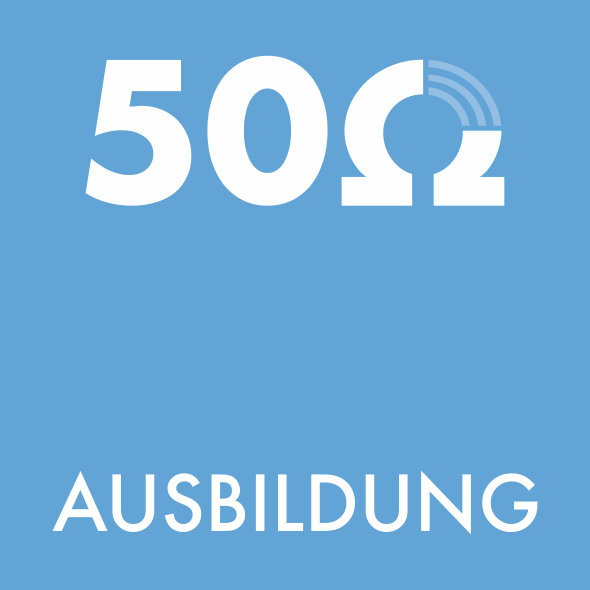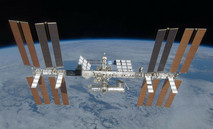Die Übertragungen bestehen aus zwölf Bildern, die Aktivitäten im Rahmen des 40-jährigen Jubiläums „Amateurfunk in der bemannten Raumfahrt“ zeigen. Empfangene Bilder sind in der ARISS-Galerie abrufbar, die kürzlich aktualisiert wurde: https://ariss-usa.org/ARISS_SSTV/.
ARISS bietet eine neue Möglichkeit, ein spezielles Zertifikat zu beantragen. Wenn Teilnehmer erfolgreich mindestens ein Bild empfangen und es in der neuen Galerie einreichen, werden sie auf eine Dankesseite weitergeleitet.
Quelle: darc.de
ARISS contact is scheduled with Cottam Scouts, Cottam, Ontario, Canada
November 14, 2024, Amateur Radio on the International Space Station (ARISS) has received schedule confirmation for an ARISS radio contact between an astronaut aboard the International Space Station (ISS) and Cottam Scouts located in Cottam, Ontario, Canada. ARISS conducts 60-100 of these special amateur radio contacts each year between students around the globe and crew members with ham radio licenses aboard the ISS.
Scouting came to Canada in early 1908 with three troops established almost simultaneously inspired by Robert Baden-Powell's Boy Scouts movement in the UK. Throughout the decades, Scouting has adapted to societal changes, introducing programs focusing on environmental stewardship, leadership, and inclusivity. The Cottam Scouting group emphasizes their local heritage, incorporating outdoor skills like camping, hiking, canoeing along with other key elements of youth development, like community service leadership. For this ARISS contact, neighboring Scouting Groups and their families have been invited to attend this event.
This will be a telebridge contact via Amateur Radio allowing students to ask their questions of astronaut Sunita Williams, amateur radio call sign KD5PLB. The downlink frequency for this contact is 145.800 MHz and may be heard by listeners that are within the ISS-footprint that also encompasses the telebridge station.
The ARISS amateur radio ground station (telebridge station) for this contact is in Casale Monferrato, Italy. The amateur radio volunteer team at the ground station will use the call sign, IK1SLD to establish and maintain the ISS connection.
The ARISS radio contact is scheduled for November 16, 2024 at 1:17 pm EST (Ontario, CAN) (18:17 UTC).
As time allows, students will ask these questions:
1. Have you seen any aliens in space?
2. What is their favourite planet?
3. How many stars are there in the Universe?
4. What do you eat and how do you cook in space?
5. How did you become an astronaut?
6. What can you see from outer space? Can you see Lake Erie?
7. How do you get back from the ISS?
8. Have you been to the moon?
9. How long does it take to get to space?
10. How long do your air tanks last?
11. Have you found any life on Mars yet?
12. How much schooling does it take to be an astronaut?
13. Can you see more constellations from space?
14. How much does a black hole weigh?
15. How cold is it in space?
16. What is your favorite sci-fi movie? Are there any that annoy you?
17. What are you studying in the space station?
18. Do you believe we ever will be to travel through space infinite distances in milliseconds?
ARISS-Europe News Bulletins are distributed by AMSAT Belgium. You can help support this effort with a donation:
https://www.amsat-on.be/donation-ariss-europe-news-bulletin/
ARISS contact is scheduled with Students at Erie Migration District School, Kingsville, Ontario, Canada
November 16, 2024, Amateur Radio on the International Space Station (ARISS) has received schedule confirmation for an ARISS radio contact between an astronaut aboard the International Space Station (ISS) and students at the Erie Migration District School located in Kingsville, Ontario, Canada. ARISS conducts 60-100 of these special amateur radio contacts each year between students around the globe and crew members with ham radio licenses aboard the ISS.
Erie Migration District School, opened in September 2024, is a K-12 school located in Kingsville, Canada, and is state of the art. The school accommodates about 1000 Elementary and 800 Secondary students, and is a dual track school, offering French Immersion and English streams.
This will be a telebridge contact via Amateur Radio allowing students to ask their questions of astronaut Sunita Williams, amateur radio call sign KD5PLB. The downlink frequency for this contact is 145.800 MHz and may be heard by listeners that are within the ISS-footprint that also encompasses the telebridge station.
The ARISS amateur radio ground station (telebridge station) for this contact is in Casale Monferrato, Italy. The amateur radio volunteer team at the ground station will use the call sign, IK1SLD to establish and maintain the ISS connection.
The ARISS radio contact is scheduled for November 18, 2024 at 11:41 am EST (ON, CANADA) (16:41 UTC).
As time allows, students will ask these questions:
1. How does your suit help you breath?
2. What do you do when you are up there? Are there certain tasks that you have to do every day?
3. How long would it take to build another space station and are there plans for one?
4. What happens if you get sick in space?
5. What is the process of becoming an astronaut? How long does it take one to get the opportunity to go to Space?
6. Have you learned anything that has a major impact on our planet by being in space?
7. When was your decision to become an astronaut and was there someone who inspired you to become an astronaut?
8. Have you ever had something scary happen to you in space?
9. Is it realistic for humans to one day live on another planet? Or even to use other planets as a travel destination for leisure?
10. Is it easier or harder for the human heart to pump blood through the body in space, because of the lack of gravity?
11. What projects are you working on and how will they affect us on Earth?
12. What does it look like when you are leaving the Earth's atmosphere?
13. How do you keep healthy and exercise in space?
14. Is there a certain sickness that you only get in space? If so, how do you treat it from space?
15. What's the greatest challenge you face as an astronaut?
16. Which planet, in our galaxy or other, is closest to having an atmosphere conducive to human life (water, temperature, oxygen)?
17. How do you know if it is day or night and is that important to know?
18. What happens if you throw a boomerang in space?
19. What do you have to do to prepare yourself to go into space?
20. What do you do with your spare time?
ARISS contact is scheduled with students at Escola Secundaria Rafael Bordalo Pinheiro, Caldas da Rainha, Portugal
November 20, 2024, Amateur Radio on the International Space Station (ARISS) has received schedule confirmation for an ARISS radio contact between an astronaut aboard the International Space Station (ISS) and students at the Escola Secundaria Rafael Bordalo Pinheiro located in Caldas da Rainha, Portugal. ARISS conducts 60-100 of these special amateur radio contacts each year between students around the globe and crew members with ham radio licenses aboard the ISS.
Rafael Bordalo Pinheiro Secondary School has about 1,000 students in 7th to 12th grades (ages 12 through 18). Their courses include studies in Science and Technology, Economics, Language Studies, Arts, and include an adult education program in various professional fields. Local amateur radio operators are supporting the school during this ARISS contact.
This will be a direct contact via Amateur Radio allowing students to ask their questions of astronaut Don Pettit, amateur radio call sign KD5MDT. The downlink frequency for this contact is 145.800 MHz and may be heard by listeners that are within the ISS-footprint that also encompasses the relay ground station.
The amateur radio ground station for this contact is in Caldas da Rainha, Portugal. Amateur radio operators using call sign CS5SS, will operate the ground station to establish and maintain the ISS connection.
The ARISS radio contact is scheduled for November 22, 2024 at 4:37 pm WET (Portugal) (16:37 UTC).
The public is invited to watch the live stream at: https://www.youtube.com/live/QzZOq7bhOas
As time allows, students will ask these questions:
1. What has been your biggest challenge in becoming an astronaut?
2. How did your family react when they first found out you were going to space?
3. How would you describe the feeling of seeing Earth from space for the first time?
4. What was the most exciting or memorable moment you experienced during a space mission?
5. How can the technology used on the ISS benefit life on Earth?
6. What does it feel like to be outside the ISS especially when repairing something?
7. Is the ISS affected by solar storms?
8. What are the dangers of staying without gravity for long periods of time?
9. What activities do you engage in during your free time on the ISS?
10. How do you take care of your mental health in space?
11. What types of scientific experiments are conducted aboard the space station?
12. To what extent do the absence of gravity and the conditions on the ISS affect the results of scientific experiments?
13. What scientific discoveries have been made possible as a result of your space missions?
14. What do you look forward to the most from future missions to the moon and Mars?
15. How does space radiation affect the human body?
16. In the case of illness, what is the protocol?
17. What happens if you lose communication with Earth?
18. How do you adjust to your normal routine after spending several months in space?
19. What do you miss most about Earth?
20. It has been a pleasure to connect and learn from you. Thank you for sharing your experiences. Wishing you all the best on your journey aboard the ISS!


